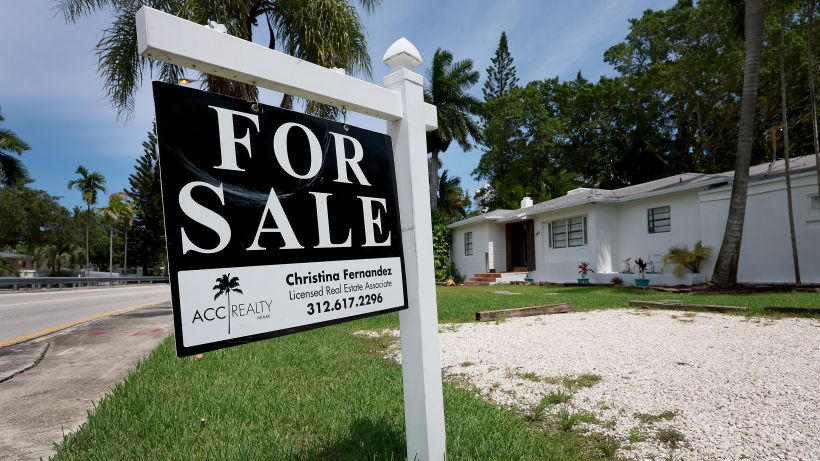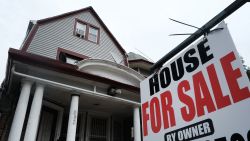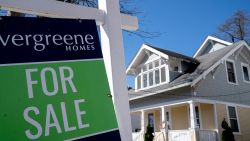Editor’s Note: Erik Lundh is a principal economist at The Conference Board. The opinions expressed in this commentary are his own. Read more opinion at CNN.
A much-feared correction in US home prices is underway. While this may feel like déjà vu, the drivers behind the recent spike in prices and the current housing market downturn are different from the ones seen in the 2000s. This time around, the US financial system is better prepared, and a national crisis is less likely.

It’s true that US homeowners should prepare for an ugly 2023. After years of underinvestment and suppressed supply, US home prices rose an eye-popping 45% between January 2020 and June 2022, as low interest rates and the surge in remote work spurred demand. For comparison, in the lead-up to the housing downturn that started 16 years ago, prices were up by 30% over a comparable period.
But the housing bubble in the 2000s was underpinned by predatory lending, poor underwriting, adjustable-rate mortgages and rampant speculation. Americans were convinced that housing was a great short-term investment and that prices would only continue to rise. This famously turned out not to be the case.
As interest rates rose leading into 2006, prices finally began to slide later that year, and homeowners started defaulting on their mortgage payments. As prices fell further, homeowners rushed to dump their properties, creating a feedback loop that cascaded throughout the entire real estate market. The subsequent financial crisis was triggered by mass defaults in low-quality mortgages that had been wrapped up in mortgage-backed securities. These assets suddenly became near-worthless, which threw the financial system into crisis.
Additionally, years of rampant demand spurred builders to overbuild in the early 2000s, flooding the country with a home surplus. As a result, following the Great Recession, it took years for demand to work through the vast housing stock that had been amassed. This, in turn, crushed the homebuilding industry, causing chronic underbuilding over the subsequent years.
Fast forward to today, and the situation is very different: Home prices are falling because the Federal Reserve is raising interest rates to quell inflation. This, in turn, has pushed mortgage rates higher. While the average rate on a 30-year mortgage fell sharply last week, it’s still more than double what it was a year ago (3.10% a year ago vs. 6.61% today). These rates make financing new home purchases unaffordable for many buyers, so demand is slowing and prices are falling.
Fortunately, demand and supply fundamentals could limit the downside for US home prices. Millennials, the largest generational cohort since the baby boomers, have gotten older and are looking to buy their first homes. Unfortunately for them, there aren’t enough to go around. But this means high prices, even though they’re starting to fall and will continue to do so, will likely be somewhat sticky. In essence, demand from Millennials will probably help keep prices from entering freefall – as was the case in 2008. It’s highly unlikely this decline would spark another financial crisis.
Additionally, in the years that followed the 2008 financial crisis, new regulations were introduced. Banks are now required to be better capitalized; lending standards are much more rigorous, leading to higher-quality loans; most mortgages are fixed-rate; and financial derivatives, such as asset-backed securities, are better regulated. This all buttresses the financial system from another housing downturn.
Other helpful trends include the spike in refinancing activity over the last few years associated with ultra-low interest rates. This pushed down monthly payments for many homeowners, making servicing their mortgages easier.
Additionally, Americans have more equity in their homes than they did leading up to the last financial crisis. Indeed, loan-to-value ratios, which measure the amount of a mortgage relative to the value of a home, for US mortgages have fallen to just 42% – a 12-year low. This creates more of a “cushion” for prices to decline before home values fall below the loans that underpin them. Thus, if a home is sold at a loss, it’ll likely hit homeowners before it hits the banks.
The ongoing housing price correction will have implications for the US economy, but lower home prices should help to quell high inflation. It will indeed come at the expense of economic growth, as homebuilding activity is already slowing rapidly and consumer confidence (and spending) will likely suffer as well. But it’s unlikely we’re heading for a repeat of 2008.




















